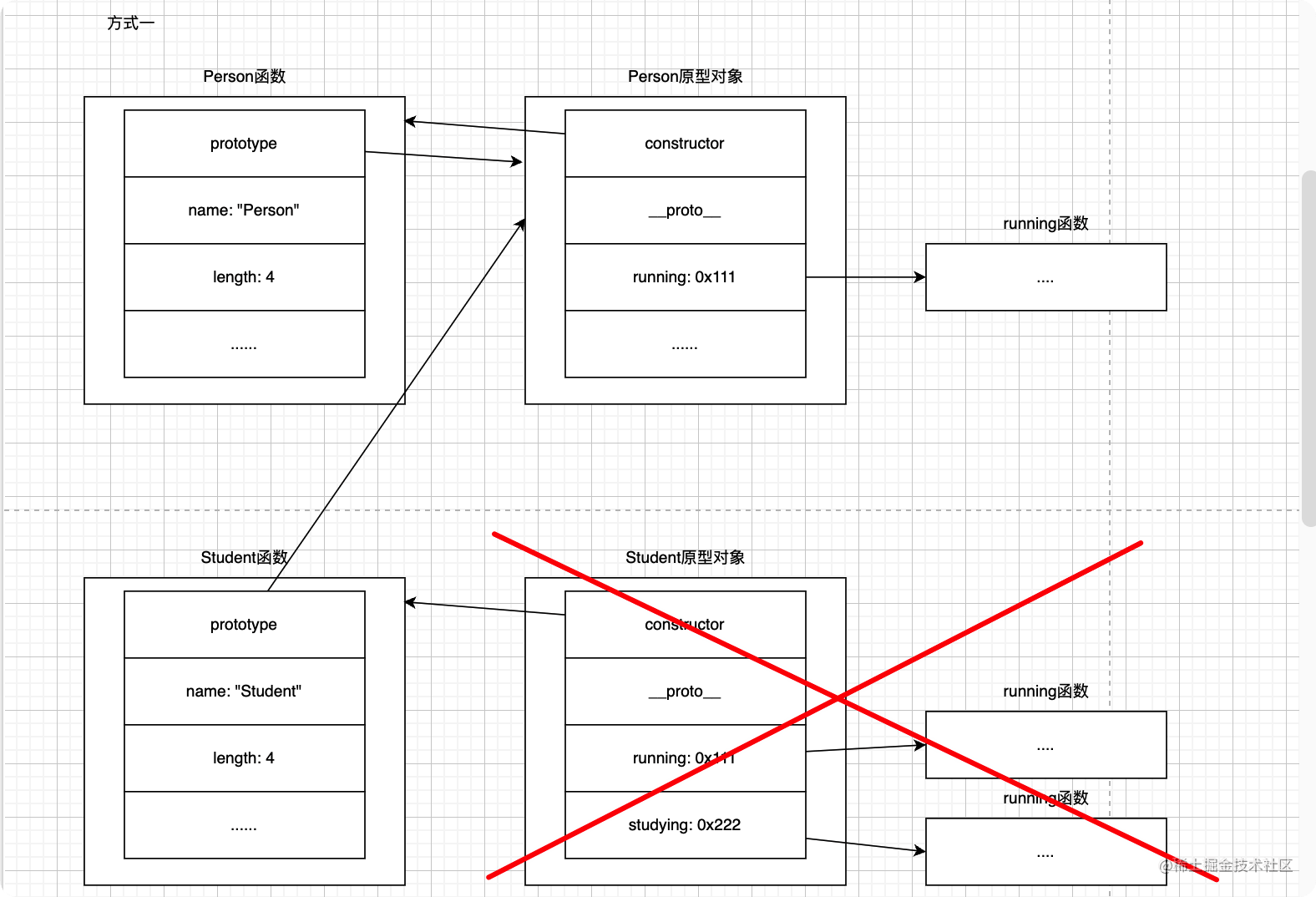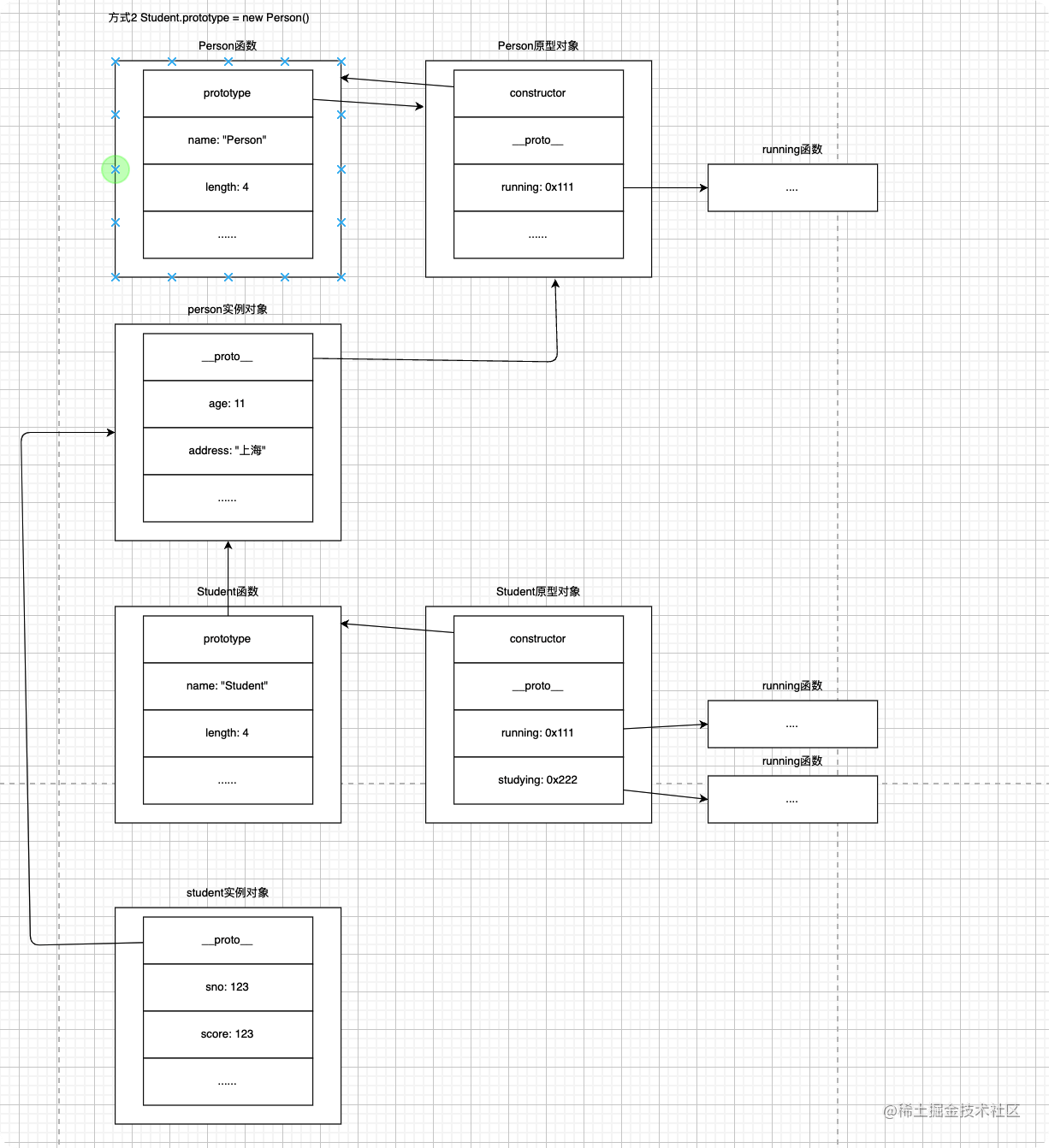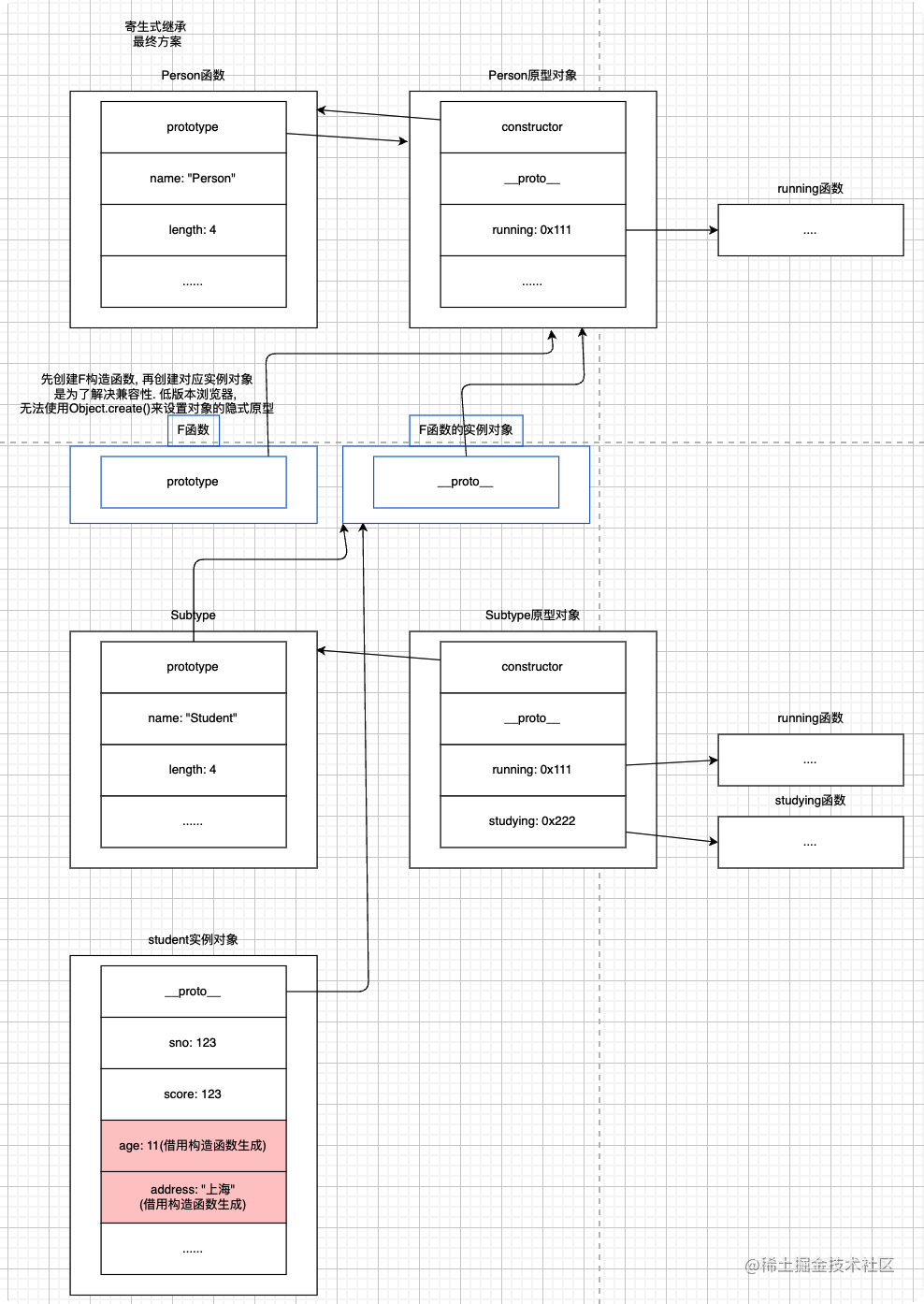目录当前需求: 实现 Student 继承自 Person构造函数Person构造函数Student希望满足的条件功能利用原形链实现方法的继承方式1: 子类原型指向父类原型方式2 子
如果手动实现继承效果, Person和Student分别写自己的属性和方法, 两个构造函数之间没有任何关联
function Person(name, age, height, address) {
this.age = age
this.height = height
this.address = address
}
Person.prototype.running = function() {
console.log("running~")
}
Person.prototype.eating = function() {
console.log("eating~")
}function Student(name, age, height, address, sno, score) {
this.age = age
this.height = height
this.address = address
this.sno = sno
this.score = score
}
Student.prototype.running = function() {
console.log("running~")
}
Student.prototype.eating = function() {
console.log("eating~")
}
Student.prototype.studying = function() {
console.log("studying~")
}内存图

Student构造函数满足以下条件
Student构建出的实例对象满足以下条件
function Student(age, height, address, sno, score) {
this.age = age
this.height = height
this.address = address
this.sno = sno
this.score = score
}
+ Stuednt.prototype = Person.prototype内存图

缺点
父类和子类共享通一个原型对象, 修改了任意一个, 另外一个也被修改
function Student(sno, score) {
this.sno = sno
this.score = score
}
+ var p = new Person()
+ Student.prototype = p内存图

缺点
function Person(name, age, height, address) {
this.name = name
this.age = age
this.height = height
this.address = address
}
Person.prototype.running = ...
function Student(age, height, address, sno, score) {
+ Person.call(this, age, height, address)
this.sno = sno
this.score = score
}
Student.prototype = new Person()内存图

优点
解决之前的硬性问题, 实例对象属性独立, 属性放在对象内而不是原型上.
缺点
Student.prototype = new Person()第一次Person.call(this)第二次__proto__上, new时产生的属性的继承已经解决, 通过Person.call(this) 解决.
方法的继承未解决, 需要找到 Student.prototype = new Person() 的替代方案
思路1
var obj = {}
obj.__proto__ = Person.prototype
Student.prototype = obj
// __proto__为浏览器增加的属性, 解决浏览器兼容性问题可以改为
var obj = {}
Object.setPrototypeOf(obj, Person.prototype)
Student.prototype = obj思路2
兼容所有浏览器 解决老版本浏览器不支持setPrototypeOf
function F() {}
F.prototype = Person.prototype
Student.prototype = new F()思路3
Object.create() 传入一个对象作为参数, 并返回一个对象, 返回的对象的原型为传入对象
var obj = Object.create(Person.prototype)
Student.prototype = obj // 工具函数
// 创建对象的过程
function createObject(proto) {
function F() {}
F.prototype = proto
return new F()
}
// 将Subtype和Supertype联系在一起
// 寄生式函数
function inherit(Subtype, Supertype) {
Subtype.prototype = createObject(Supertype.prototype)
Object.defineProperty(Subtype.prototype, "constructor", {
enumerable: false,
configurable: true,
writable: true,
value: Subtype
})
}
function Student(age, height, sno, score) {
Person.call(this, age, height)
this.sno = sno
this.score = score
}
+ inherit(Student, Person)
// 使用方法
Student.prototype.studying = function() {
console.log("studying")
}💡 使用Person.call实现属性的继承
💡 使用inherit实现方法的继承
createObject 使Student.prototype指向Person的prototype, 但中间多一个构造函数F(), 解决方式1 的问题Object.defineProperty 实现 Student.prototype 的 constructor 属性指回Student构造函数.内存图
最初的设计思想, 是为了实现对象的继承, 所以有了以下的代码
createObject只能够做到构造一个有原型的空对象, 现在想要让构造的对象也有属性
createInfo(proto, age, height) {
const newObj = this.createObject(proto)
newObj.age = age
newObj.height = height
return newObj
}到此这篇关于浅谈javascript的几种继承实现方式的文章就介绍到这了,更多相关JavaScrip 继承内容请搜索编程网以前的文章或继续浏览下面的相关文章希望大家以后多多支持编程网!
--结束END--
本文标题: 浅谈JavaScript的几种继承实现方式
本文链接: https://lsjlt.com/news/210910.html(转载时请注明来源链接)
有问题或投稿请发送至: 邮箱/279061341@qq.com QQ/279061341
2024-01-12
2023-05-20
2023-05-20
2023-05-20
2023-05-20
2023-05-20
2023-05-20
2023-05-20
2023-05-20
2023-05-20
回答
回答
回答
回答
回答
回答
回答
回答
回答
回答
0